Have you ever caught yourself being utterly captivated by the deft finesse of lockpicking, as seen in those edge-of-your-seat spy films? Trust me, the allure isn’t lost on anyone with an itch for a little intrigue.
Diving into this hobby doesn’t just mean following in the footsteps of silver-screen secret agents; it opens up a world brimming with its own rewards and hefty doses of personal satisfaction.
In this post, we’re set to explore the enthralling universe of lockpicking – delving into its storied past, mastering its techniques, and learning how to approach it with integrity.
So get ready to embark on an adventure that promises to unlock more than just physical barriers!
Key Takeaways
Lockpicking is a hobby with ancient roots, dating back to the Egyptians and Romans.
It’s important to practice lockpicking legally and ethically, only on locks you own or have permission to use.
Starting out requires basic tools like tension wrenches, feeler picks, and practice locks.
Light pressure and patience are key in successfully picking a lock.
Joining the lockpicking community offers access to online resources, local groups, and shared learning experiences.
Table of Contents
The Fascinating History of Lockpicking
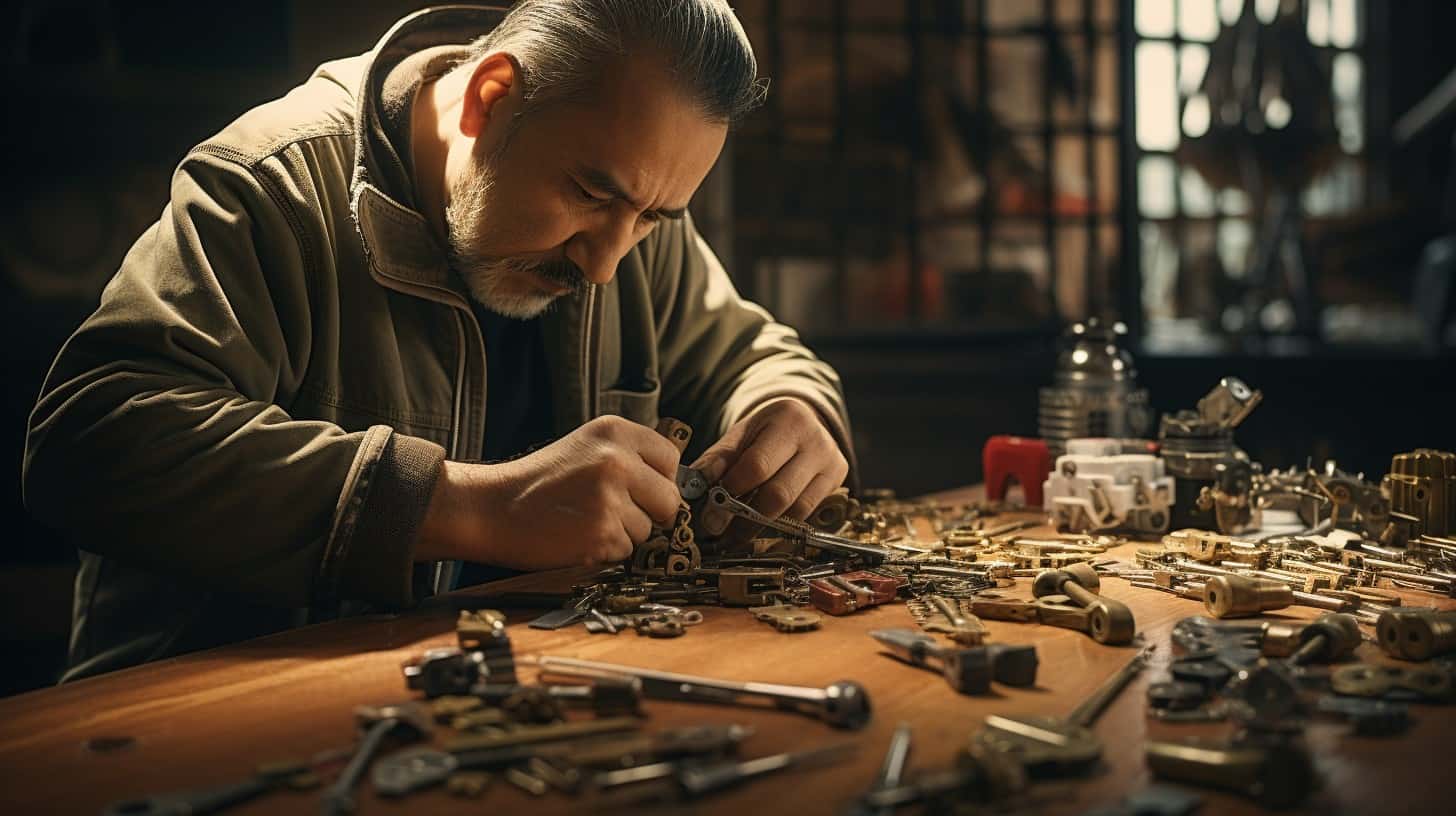
Lockpicking isn’t just a cool skill I like showing off to my friends – it’s got deep roots. Look back thousands of years, and you’ll find Egyptians and Romans already figuring out how to pick locks.
That blows my mind! These folks were smart, using simple tools to mess with locks that people thought were safe.
Fast forward to old England, guys like Robert Barron and Joseph Bramah were making new kinds of locks. Then came Jeremiah Chubb with his detector lock that showed if someone tried picking it.
People loved this stuff back then, kind of like how we geek out on tech today. They even believed some locks were unbeatable until someone always proved them wrong – that must have been epic! This game between lock makers and lock pickers pushed everyone to get better at what they did.
It turned into more than just keeping things safe; it became a sport, a real challenge for the brain.
And now there are whole groups dedicated to this, places where people go head-to-head picking locks just for fun or in serious contests. Bet those ancient locksmiths never saw that coming!
Legal and Ethical Considerations in Lockpicking
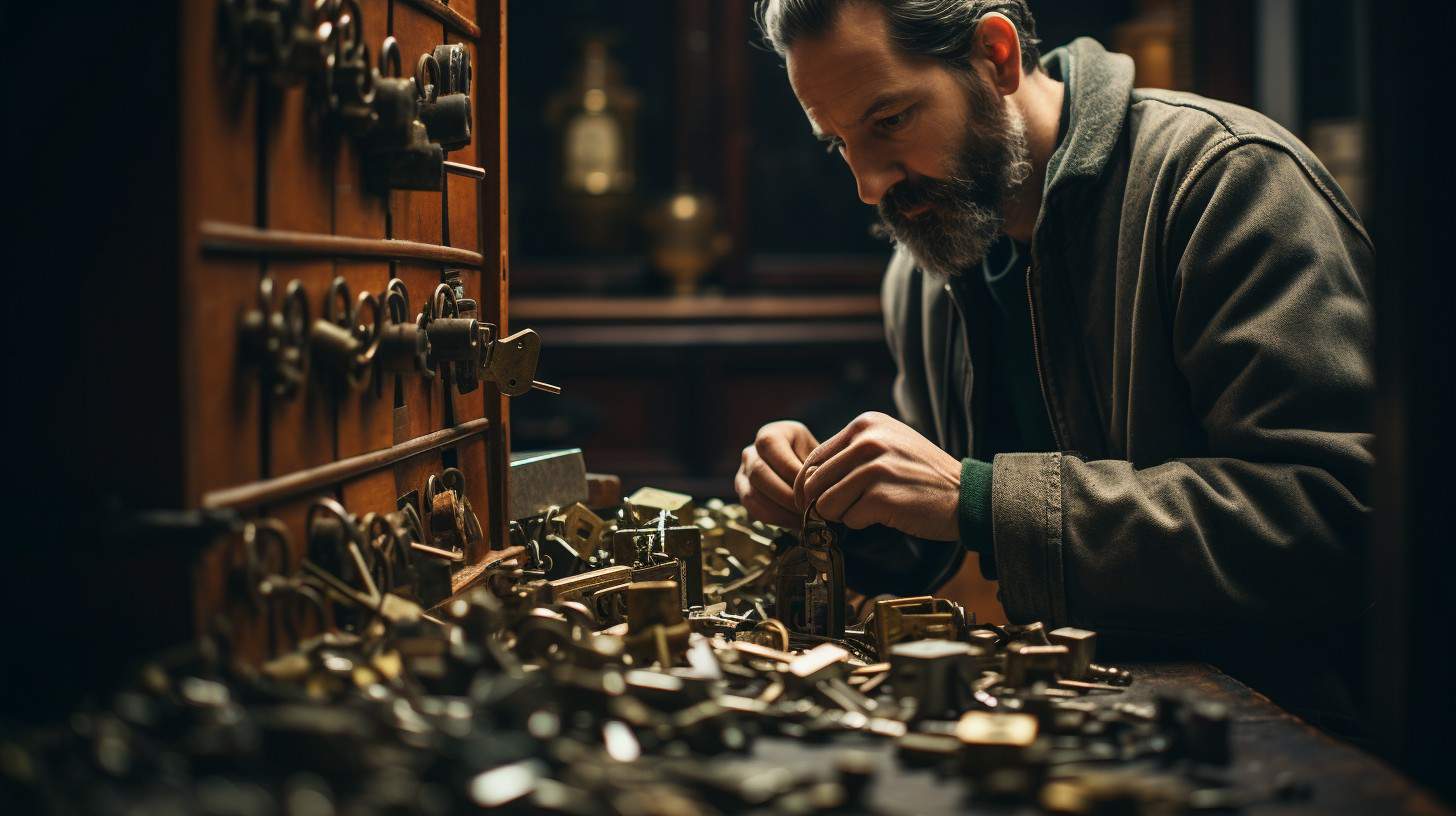
Before diving into the world of lockpicking, it’s crucial to navigate the legal landscape and uphold a strong ethical code. This ensures that your engaging pastime doesn’t accidentally steer you into murky waters, respecting others’ privacy and property rights while indulging in your geeky hobby.
Understanding the Laws
I make sure I know the rules before I start picking locks. It’s key to stick to local, state, and federal laws. Lock picking is fun, but it should never be for breaking into places or stealing things.
There’s even a group called Locksport International that watches over the sport part of lock picking.
If you’re like me and love this hobby, always pick locks that you own or have permission to work on. Never use your lock picking tools on someone else’s property without them saying it’s okay.
This keeps us all out of trouble and makes sure we’re enjoying our geeky passion the right way!
Respecting Privacy and Ownership
Lockpicking is super cool, but it’s important to play by the rules. Just like hacking in the cyber world, we’ve got to respect people’s stuff and their space. We don’t pick locks that aren’t ours or that we don’t have permission to mess with.
This is not just being nice; it’s about staying on the right side of the law.
Think about lockpicking like being a superhero – you have powers, but you must use them for good. You can explore how locks work and enjoy your hobby without crossing lines. Keep your lock picking practice ethical and legal by only using your tools on practice locks or those you own.
Getting Started with Lockpicking
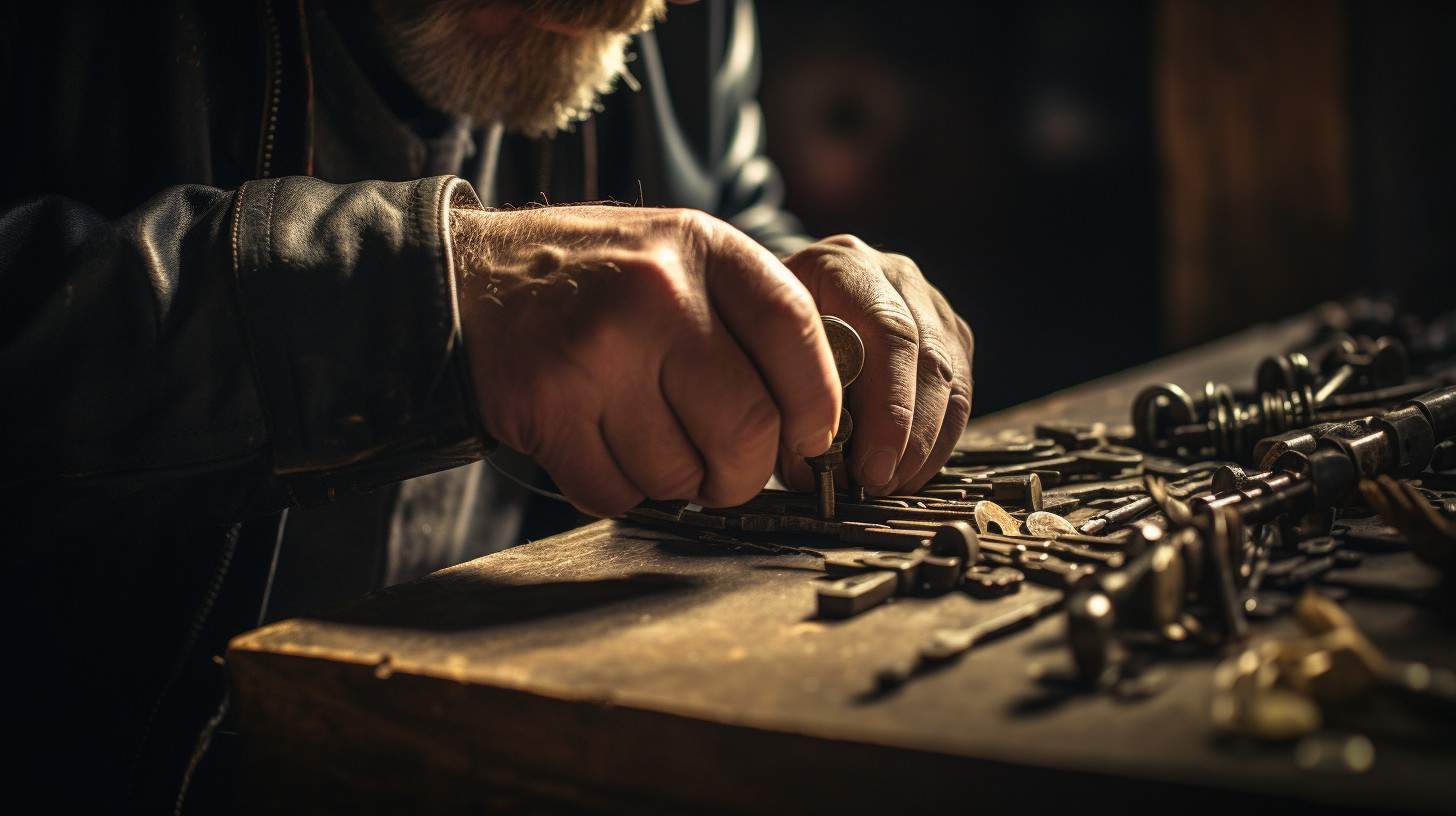
Diving into lockpicking requires a blend of curiosity, patience, and the right toolkit. It’s an intriguing gateway to understanding the intricate dance between locks and keys, setting you on a path where each click or turn is a leap towards mastering this crafty art form.
Essential Tools for Beginners
Lockpicking may sound like something from a spy movie, but it’s a real hobby that can be quite fun. I’m here to talk about the essential tools you’ll need if you’re just starting out.
- Tension Wrenches: Your lock picking kit won’t be complete without these. They help you turn the lock cylinder and come in different styles, including twists, notches, or even L-shaped metal pieces. They apply the necessary pressure to keep the pins in place once they’re set.
- Feeler Picks: These are your go-to tools for moving individual pins. Their success rate is higher because they give you more control. Also known as hook picks, feeler picks must be strong yet flexible to manipulate the pins effectively without breaking.
- Lock Picking Rakes: Instead of setting each pin one by one, raking involves moving back and forth across all the pins. It’s faster than single-pin picking but might require more practice to get it right.
- Practice Locks: You’ll need locks to practice on, and choosing ones with a clear casing can help you see what’s happening inside while you work. Start with simple pin tumbler locks before moving on to more complex models.
Selecting Your First Practice Locks
Choosing my first practice locks was like picking out the perfect tools for a mission. I needed ones that would set me up for success while I learned the ropes of this cool hobby. Here’s how I made my choices:
- Start with simple pin-tumbler locks: These are your basic locks, like what you’d find on a door to a house. They’re great for beginners because they use pins that you can feel and manipulate with your lock picks.
- Look for clear practice locks: Clear locks let me see what’s going on inside while I’m working. It’s super helpful to watch the pins move up and down as I poke around with my tools.
- Avoid locks with security pins at first: Some fancier locks have tricky pins that make them harder to pick. Stick to standard ones until you get the hang of things.
- Consider a repinnable lock: As I got better, having a lock where I could change the pins meant new challenges without buying new locks all the time.
- Check out Locksport communities: Online forums and local groups are full of people who love picking locks. They gave me advice on which practice locks were best when starting out.
- Stay away from using real door locks or anything in use: Picking can damage a lock, so never practice on something that needs to stay secure or that you actually use.
Setting Up a Comfortable Workspace
I make sure my lockpicking spot is just right. It’s important to have a place that feels good and where everything I need is easy to grab. My table is strong and doesn’t shake, and the light over it is bright, so I can see every little part of the locks I’m working on.
This makes it easier for me to focus and do a better job.
My chair is comfy too, because being in one spot for a while can make you stiff if you’re not sitting right. And keeping things neat means I don’t get distracted by messes or lose any tools.
Now that we’ve got our space set up, let’s dig into understanding how locks really work.
Mastering the Basics of Lock Mechanics
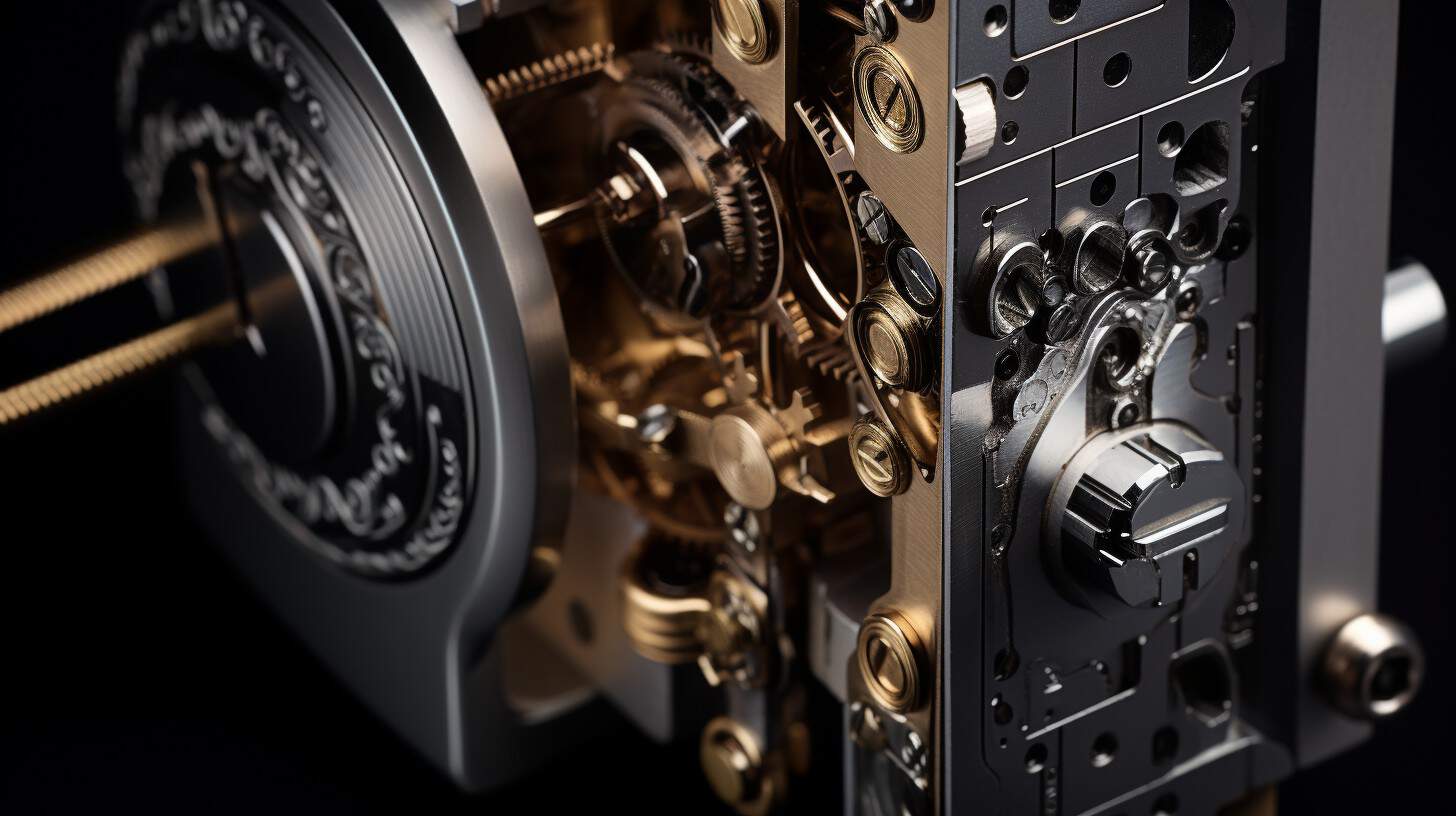
Understanding the inner workings of locks is crucial to honing your lockpicking skills, revealing a world where every click and turn unravels the secrets to becoming an adept hobbyist.
How Locks Work
Locks keep our stuff safe using a pretty clever design. Inside a lock, there’s a cylinder that turns only when the right key is in it. This cylinder has pins of different lengths and springs pushing them down.
When you put the key in, it pushes these pins up to just the right height so that they line up with a split between the cylinder and its housing. Only then can you turn the key and open the lock.
Each pin has two parts – one that stays in the housing and one that goes into the cylinder. If all of these pairs align perfectly at what we call “shear line,” nothing stops you from turning your key.
Think of it like solving a puzzle; everything must fit exactly for success! And this is where picking comes into play – by using tools instead of keys to get those pins lined up right without having or needing the actual key itself.
The Role of the Tension Wrench
I hold the tension wrench in my hand like a key to an invisible door. This little tool is amazing! It slides into the keyway and applies just enough force to start setting things up inside the lock.
Think of it as telling the pins, “Get ready; we’re about to move!” When I twist it gently, it creates a small gap that lets me push each pin up with my pick.
Now, here’s where this tool shines. The tension wrench isn’t just for pushing; it feels what’s happening inside the lock too. As I work with my picks, the feedback from this tool tells me if I’m on track or if I need to adjust my touch.
It truly is a dance partner in this lockpicking tango – leading when necessary and following clues from those tricky pins.
Picks and Rakes: Tools of the Trade
Lock picking is one of those geeky hobbies that pulls you in with its mix of skill and little-known knowledge. It’s like being Jason Bourne, but instead of evading bad guys, you’re mastering the art of opening locks without keys.
- Tension Wrench: This tool is the key to successful lock picking. You use it to apply a slight turn to the lock cylinder, just enough to create tension. It’s where the magic starts – once there’s tension, the pins inside the lock can set when you pick them.
- Feeler Pick: This is a single thin metal piece that helps you push up each pin inside a lock. You need to feel around gently and find which pin needs lifting. Think of it as playing a tiny piano, where every pin is a key that needs just the right touch.
- Lock Picking Rake: Unlike the feeler pick that deals with one pin at a time, rakes are for moving multiple pins at once. Slide this tool into the lock and move it up and down, back and forth – it’s kind of like brushing your hair, but you’re trying to find the right pattern to get those pins set.
- Different Picks for Different Locks: Not all locks are simple cylinder ones; some have unique features like wafer or disc detainers. For these types of locks, you’ll need special picks to match their mechanics. Your toolkit has to be as diverse as your interests in locks!
- Practice Makes Perfect: Getting good at using picks and rakes takes practice. Start with easy locks – think basic tumbler locks from your hardware store. As your skills grow, so will your collection of more complex locks and sophisticated tools.
Step-by-Step Guide to Picking Your First Lock
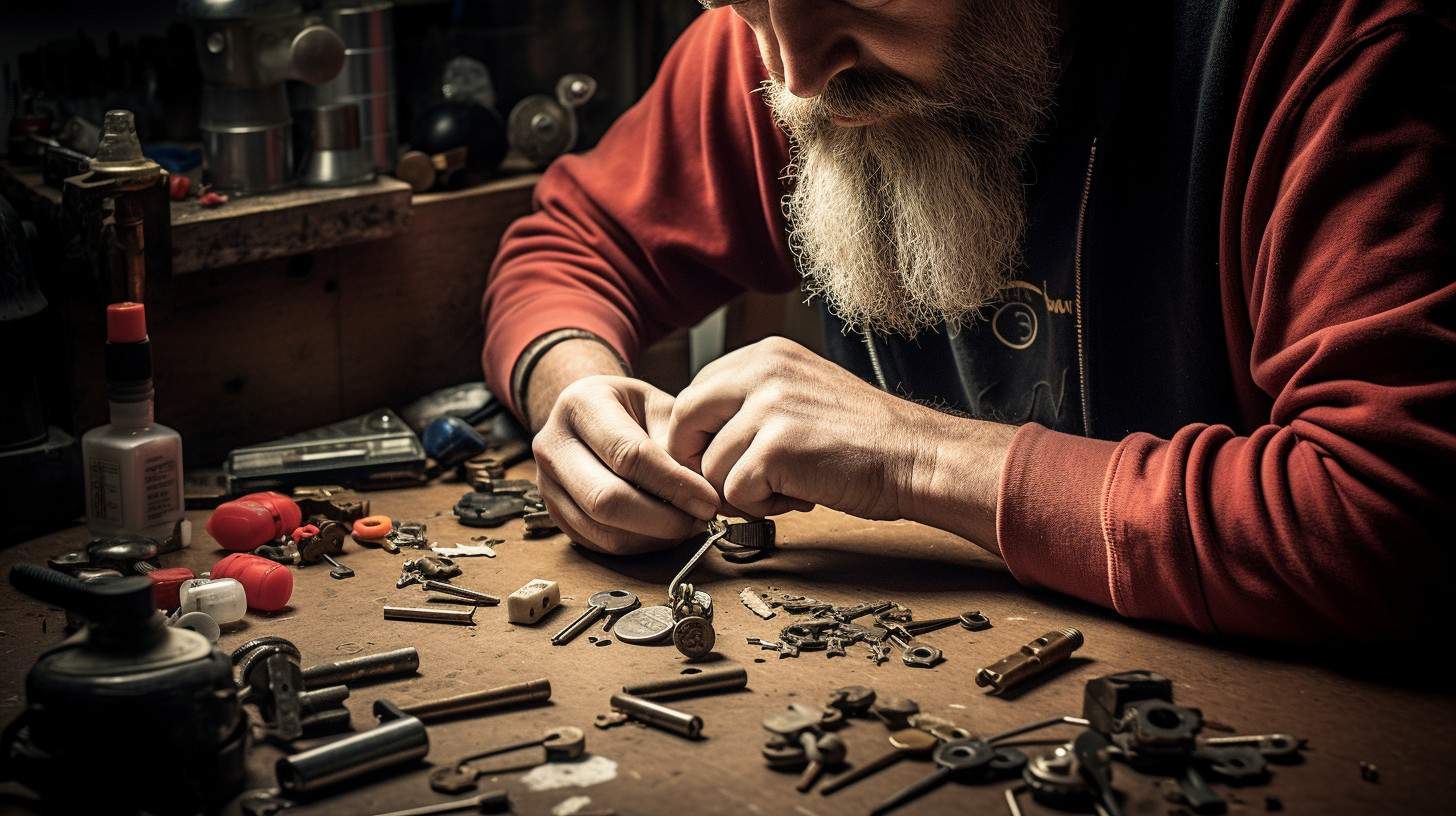
Diving into the nuts and bolts of lockpicking, I’ll walk you through a hands-on guide tailored for beginners—ensuring you get that satisfying click as your first lock springs open.
It’s all about precision and patience, elements we’ll explore together as we maneuver through the pins and mechanisms at the heart of every lock.
Inserting the Tension Wrench
I grab my tension wrench, the key to starting a successful lockpick. It’s all about setting it right into the bottom of the keyhole. I need to turn it ever so slightly, just like turning a key.
That pressure is what makes the pins set in place when I start picking them.
Holding onto my tension wrench with a light grip, I make sure not to push too hard. Too much force can bind the pins, making it tough to pick the lock. It’s like trying to open a jar with too tight of a lid; finesse wins over muscle here.
Keeping that gentle and steady pressure is part of the dance between me and the lock – one wrong move and I’ll have to start again, but getting it just right feels amazing.
Choosing the Right Pick
Picking the right tool can make or break your lockpicking adventure. Think of it like choosing a character in a video game; each has its own special abilities. In lockpicking, picks and rakes are your go-to buddies.
A feeler pick is great for getting to know each pin one by one, while a rake can help you tackle several pins at once. It’s like having different keys for the same treasure chest.
You don’t want just any pick, though. You need to start with something that fits well in your hand and responds to your touch. Start with simple picks before moving on to fancier ones as you level up.
With practice locks like MASTER LOCK 141D or #7, you’ll soon get a feel for what works best for you. Once you have that down, sticking pins where they belong becomes second nature, just like hitting those high scores in games! Now, let’s talk about feeling the pins and applying pressure—the real action starts there!
Feeling the Pins and Applying Pressure
I get my lockpicking tools ready and focus on the task. Feeling the pins inside a lock is like finding hidden treasures. Each tiny pin needs just the right touch to move into place.
I apply gentle pressure with the tension wrench, then use my pick to push up each pin.
The trick is knowing how much force to use. Too much, and you’ll jam everything up; too little, and nothing moves. It’s a game of balance and patience. As I slide my pick in, I can sense the pins’ resistance—then that tiny click when they set just right.
That sound means I’m one step closer to unlocking the secret world inside every cylinder lock!
Tips and Tricks for Successful Lockpicking
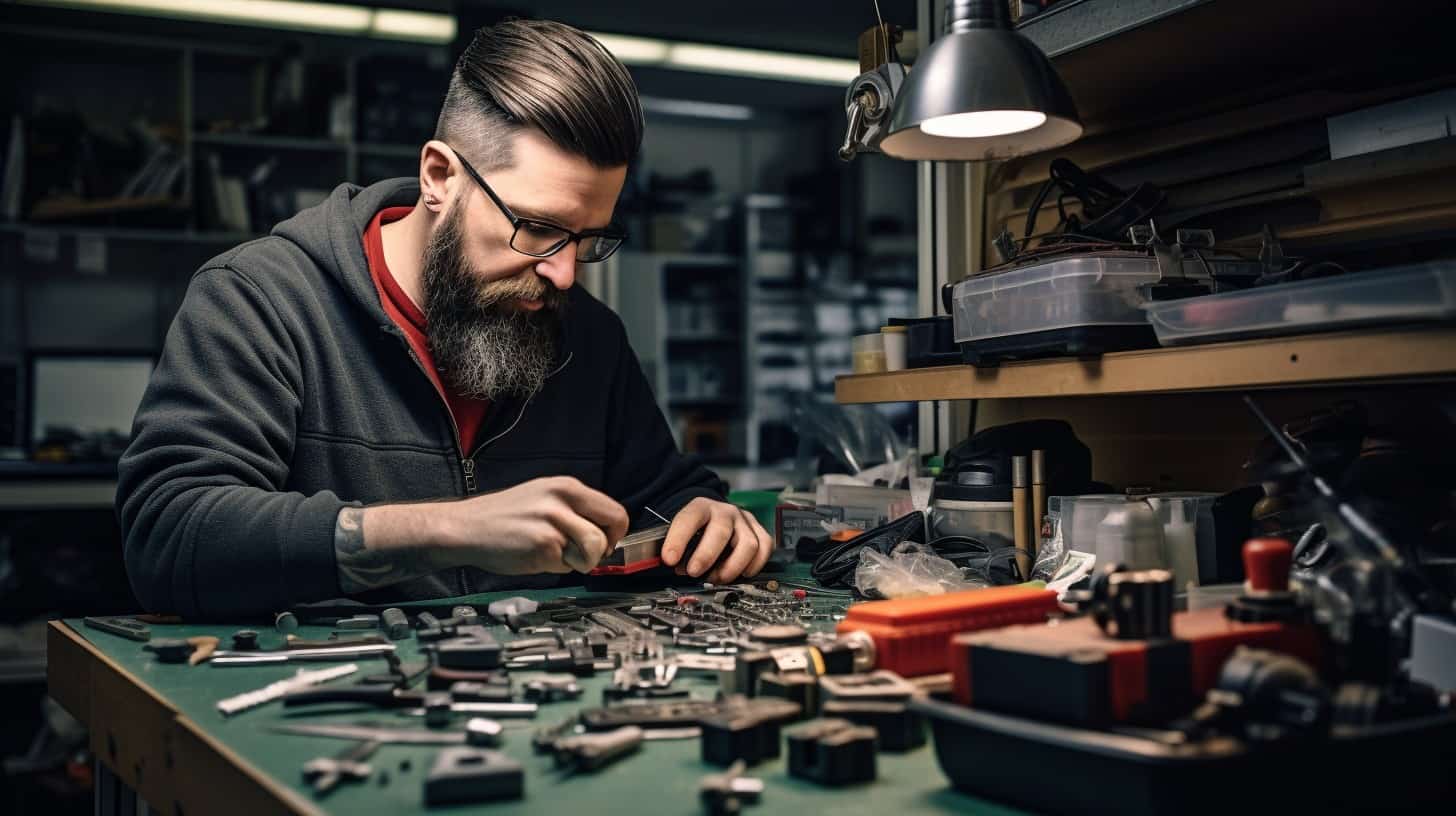
As a burgeoning lockpicker, mastering the craft can feel as intricate as the locks themselves, yet with strategic guidance; those tumblers will turn in your favor. I’ve gathered tested insights that not only ease the learning curve but significantly boost your dexterity and understanding – keys to unlocking your potential in this puzzling pastime.
The Importance of Light Pressure
Light pressure is everything in lockpicking. You have to be gentle when you touch the pins inside a lock. Just like tickling a piano key or petting a cat, it’s all about that soft touch.
Push too hard, and the pins won’t move how you want them to. But get it just right, and they’ll slide into place like magic.
I learned how important this skill was from expert lockpickers online and physical penetration testers who do this for work. They all say mastering light pressure can make the difference between popping a lock open or sitting there scratching your head.
This tiny detail could turn you into a true artist in the world of locksport.
Overcoming Common Challenges
I know trying new things can bring up some hurdles. Lockpicking is no exception, but I’ve got some tips for getting past those pesky issues.
- Start with a clear mindset. Lockpicking needs patience and focus, so make sure you’re not rushed or stressed.
- Use the right tools. Don’t cut corners on cheap picks; they could break or bend, making your job harder.
- Pressure matters. Apply just enough force to the tension wrench. Too much and the pins will bind; too little and they won’t set.
- Get a feel for it. Every lock is unique. Spend time feeling how the pins move inside the lock.
- Keep your touch light. Heavy-handedness can harm the lock or your tools, so keep movements gentle.
- Accept that mistakes are part of learning. You might not open every lock right away, but every attempt teaches you something.
- Practice makes perfect. The more locks you pick, the better you’ll understand different mechanisms and techniques.
- Change up your practice locks regularly to avoid memorizing a single lock’s quirks instead of mastering the skill.
- Take breaks if frustration sets in. A fresh perspective often makes a difference when you return to picking.
- Learn from others by joining online forums or local locksport groups where people share strategies and encouragement.
When to Move Onto More Complex Locks
You’ll feel it in your fingers when you’re ready for tougher locks. Once you’ve got the hang of simple pin tumbler locks, like common Kwikset deadbolts, more complex ones will call to you.
Look for locks with security pins, or try a wafer lock. Each type offers new puzzles and helps sharpen your skills.
Diving into disc detainer locks or a Bramah lock also mixes things up. These need unique picks and techniques compared to basic cylinder locks. The change challenges your understanding of lock mechanics.
Plus, mastering varied styles makes joining competitions and locksmithing events even more exciting!
Joining the Lockpicking Community
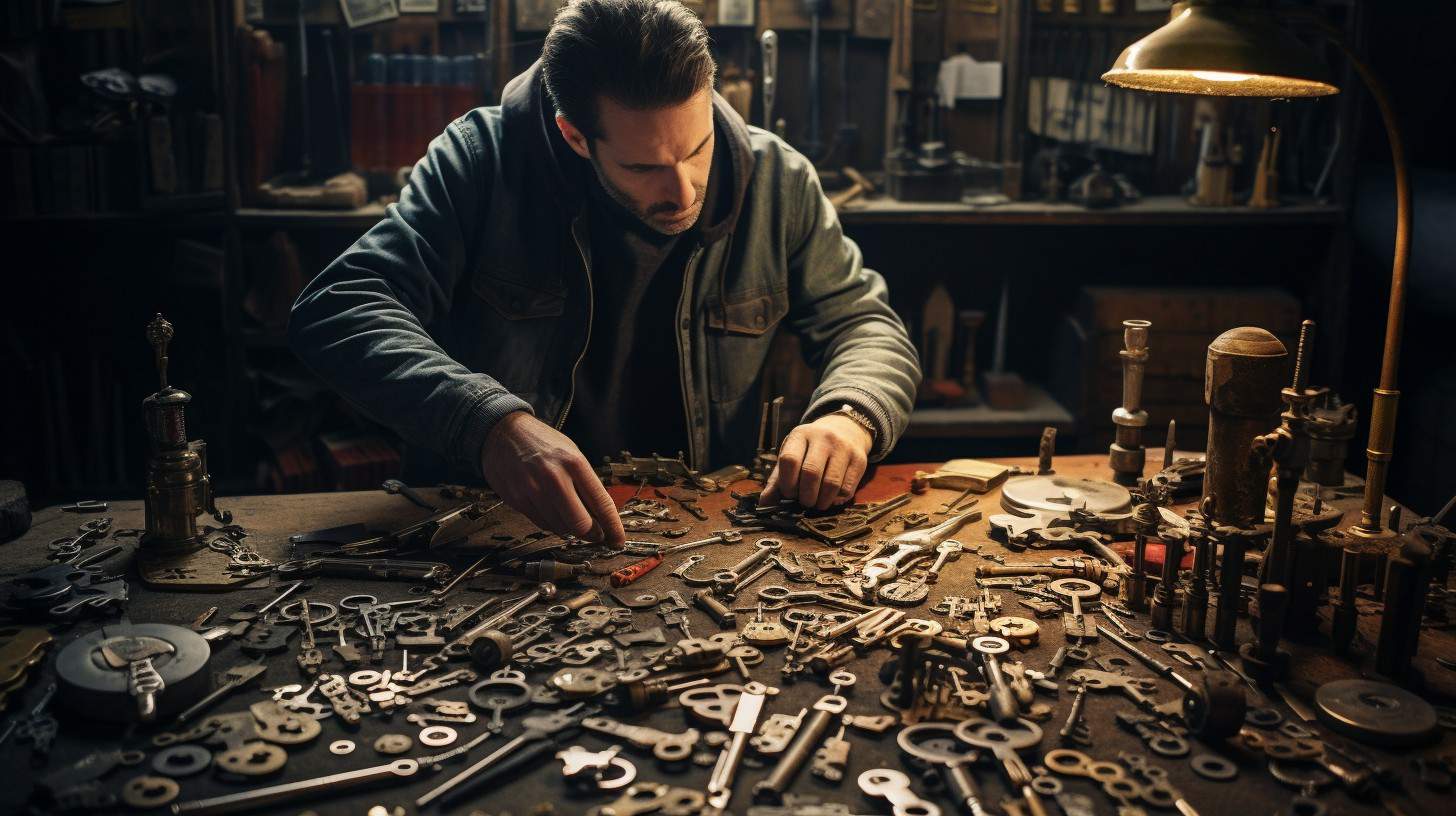
Diving into the world of locksport, you’ll discover that joining the lockpicking community not only enhances your skills but connects you with fellow enthusiasts who share your passion for this intricate and rewarding hobby.
Keep reading to unlock the door to a community that’s ready to welcome you with open picks!
Online Forums and Resources
Lockpicking is more fun when you share it with others. Online forums and resources are perfect for this.
- Discover lockpicking websites with tons of useful tips. They can teach you everything from the basics to advanced techniques.
- Find videos made by seasoned lock pickers. These videos often show hands-on how-tos that can help you see exactly what to do.
- Join discussions on social media platforms dedicated to lockpicking. Here, you can ask questions and get answers from people who love locks as much as you do.
- Read blogs by security professionals. They have insights into the latest tools and tricks in the world of lockpicking.
- Look for local locksport groups for meetups. Getting together with others nearby gives you a chance to learn and practice in person.
- Sign up for newsletters from lock picking websites. They’ll send new info and updates straight to your inbox.
- Connect with hobbyists who can share their experiences and favorite tools. You might even make new friends who share your nerdy passion.
- Check out online courses if you want structured learning. Many courses offer step-by-step guides that go deeper into lock mechanics and picking techniques.
Local Locksport Groups
I love getting together with local locksport groups. They’re places where people who enjoy lockpicking meet to share tips, tools, and fun challenges.
- Find a group near you by searching online or asking in lockpicking forums.
- These groups meet regularly, sometimes at hacker spaces or even public places like coffee shops.
- As a member, I get to exchange locks with others, which keeps my practice interesting and diverse.
- We often have safe and ethical competitions; it’s like playing a sport but with picks and locks.
- Some groups partner with lock manufacturers for sponsored events or to test new products.
- Locksport gatherings are part of bigger hacker conferences as well, especially infosec ones.
- It’s amazing because there’s always someone more experienced and willing to teach newcomers.
- The community also discusses the legal implications of lock picking and how to stay within the law.
- We uphold high ethics. Only practice on locks that I own or have permission to pick. No exceptions!
- Groups sometimes host auctions for rare or interesting locks that can be hard to find anywhere else.
Competitions and Events
Lockpicking isn’t just about fiddling with locks alone in a room. It’s grown into an exciting sport with contests where people like me can show off our skills.
- Locksport International governs the sport. They make sure everything is fair and fun.
- At competitions, we get to meet other geeks who love picking locks. It feels great to belong to this unique group.
- We watch experts pick tough locks. This teaches us new tricks and pushes us to get better.
- Some events have timed challenges. Fast pickers can win cool prizes or just bragging rights!
- Local groups often host these events. They’re perfect for making friends nearby.
- We share stories and tips at gatherings, helping each other grow in the hobby.
- Competitions are safe spaces to practice skills legally and ethically, keeping the fun part of lockpicking in focus.
Advancing Your Skills
As your fingers become more familiar with the subtle dance of lockpicking, you’ll find yourself yearning for greater challenges—this is where advancing your skills becomes paramount.
Delving deeper into this craft means upgrading to sophisticated tools and facing off against high-security locks that demand a more profound understanding and deft touch.
Exploring Advanced Picks and Tools
Lockpicking gets more exciting as you go deeper. Advanced tools open doors to tougher challenges.
- Understand advanced picks like dimple rakes, disc detainers, and hook picks. These tools help defeat complex locks.
- Get a lock pick gun, which can open many pin tumbler locks quickly.
- Try out electric picks. They’re power tools that make the picking process faster.
- Explore bypass tools. These can unlock without touching the lock’s pins.
- Look for practice locks with security pins. These give you a feel for real-world locks.
- Consider tubular lock picks for round keyholes found on things like bike locks.
- Use a plug spinner when you’ve picked the lock in the wrong direction.
- Get to know wafer picks used for simpler wafer locks in cabinets and mailboxes.
- Learn about jiggler keys for auto locks where the actual key has unique notches.
- Examine impressioning tools to make a key from a lock without having the original.
Tackling High-Security Locks
So you’ve got the hang of basic picks and tools. Now, let’s dive into high-security locks. These are a big jump from simple padlocks and require more skill.
Continuous Learning and Practice
I love lockpicking, and let me tell you; it’s a skill that gets better with time. Just like gaming, where leveling up needs patience and practice, lockpicking requires the same dedication to grow your expertise.
- Start by setting clear goals for what you want to achieve in lockpicking. Perhaps it’s opening a basic padlock quickly or tackling something more complex like a Chubb detector lock.
- Get your hands on different types of locks. Safes, door locks, and padlocks all work differently. Playing with a variety keeps your skills sharp.
- Practice regularly. Make it part of your routine, just like checking for new posts from your favorite online community.
- Share experiences and learn from others in locksport forums. Lock exchanges are a great way to get new challenges without breaking the bank.
- Stay legal and ethical at all times. Understand that owning lockpicks is fine, but using them without consent is not.
- Keep learning about the tools of the trade. This hobby isn’t just about picks and wrenches; there are rakes, jackknives, and even electronic picks for keycard systems.
- Embrace failure as part of the learning process. You will encounter locks that seem impossible to open at first.
- Push through tough challenges by researching advanced techniques used by experts or even pen testers in cybersecurity fields.
- Attend competitions to test your skills and learn from other enthusiasts face-to-face. Locksport events can motivate you to reach higher levels of proficiency.
- Finally, teach someone else what you’ve learned about picking locks. Teaching is often the best way to deepen one’s own understanding.
Lockpicking Is More Than a Hobby
Lockpicking is more than just a fun way to pass time. It sharpens your mind and teaches patience. Every click of a pin falling into place feels like a small victory. You join a community that values skill and problem-solving.
As hobbies go, it’s unique, practical, and totally exciting!
FAQs About The Benefits of Lockpicking as a Hobby
What is lockpicking as a hobby?
Lockpicking is a nerdy hobby where people learn to unlock locks with tools like lock picks without the key. It’s a puzzle that helps with creativity and empowerment.
Can lockpicking be more than just fun?
Yes! Lockpicking can teach you lots about locks and keys, latch bolts, and even card readers. It makes you think in new ways and can make you feel safe because you know more about security.
Is it okay to pick locks for fun?
Picking locks is okay if you follow the rules and only pick your own or have permission from the owner. You should know legal awareness so that your hobby does not turn into burglary.
Are there groups for people who like picking locks?
Sure! There are groups called locksports where folks get together to practice their skills or compete in picking different kinds of handcuffs or manacles safely.
Why do some websites talk about lockpicking tools?
Some websites might have affiliate programs where they share special links to sell locksmith tools, but remember using these tools comes with responsibility!



